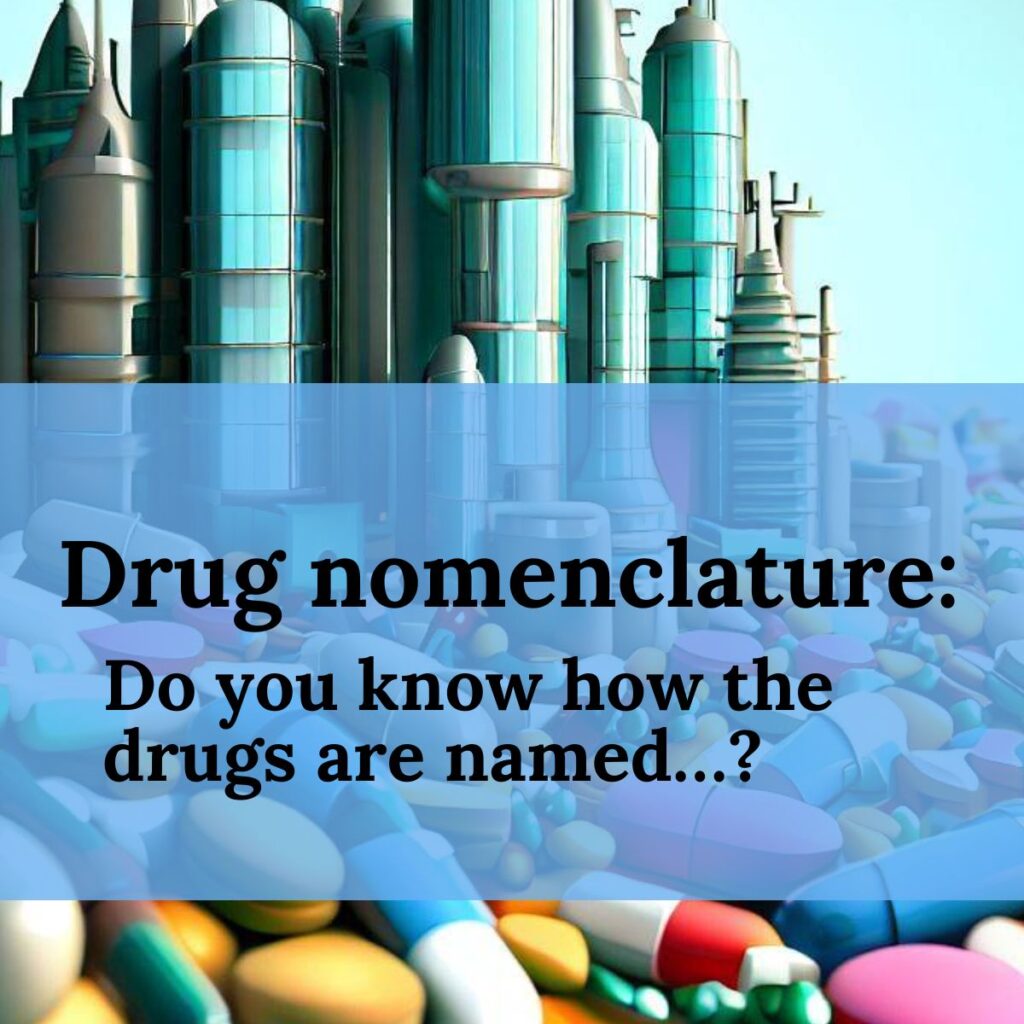DRUG NOMENCLATURE: DO YOU KNOW HOW THE DRUGS ARE NAMED…..?

Do you ever wonder about how a medicine gets a name? Naming a drug is a very
complex and time consuming job. Pharmaceutical companies spend a lot of time and money to find a specific name for a new drug, sometimes they take years to
come up with a perfect name for a product. Today we can make an overview of how
a new drug typically gets its name:
- Chemical and Biological Discovery:
The process begins in the laboratory, where researchers identify and develop a new
compound with potential therapeutic effects. This compound is first referred to by a
code name or alphanumeric designation based on its chemical structure. That may
be some letters and numbers. After further research they give an IUPAC name for
that compound like N-(2,3,5,6-tetradeuterio-4-hydroxyphenyl)acetamide for paracetamol - Non-proprietary Name (Generic Name):
When they finish with initial studies and the product shows promising results they
look for a generic name for that drug.This non-proprietary name or generic name is
assigned by regulatory authorities, such as the World Health Organization (WHO).
The generic name reflects the drug’s chemical structure and follows standardised
nomenclature guidelines. For example, the generic name for the pain reliever Tylenol
is acetaminophen.
- Proprietary Name Selection:
Pharmaceutical companies then propose proprietary names, also known as brand
names or trade names, for their products. This step involves a creative process to
come up with a name that is easy to remember, pronounce, and market. The
proposed names undergo internal review to ensure they align with the company’s
branding strategy. - Trademark Clearance:
To protect the brand identity, the proposed proprietary name undergoes a thorough
trademark clearance process. This involves checking for conflicts with existing
trademarks to avoid legal issues and confusion in the marketplace. - Regulatory Approval:
The selected proprietary name must be submitted to regulatory agencies, such as
the U.S. Food and Drug Administration (FDA) in the United States or the European
Medicines Agency (EMA) in Europe, for approval. Regulatory authorities assess the
proposed name to ensure it meets regulatory standards and does not convey
misleading information.
- International Considerations:
Given the global nature of the pharmaceutical industry, companies also consider international implications. The selected name should be culturally sensitive, easy to
translate, and not carry negative connotations in different languages.
Example:
Let’s take the example of the antidepressant Prozac. The generic name for Prozac is fluoxetine. Fluoxetine reflects the drug’s chemical structure, following the generic
naming conventions. However, the proprietary name “Prozac” was chosen by Eli Lilly
and Company during the branding process. The name is short, memorable, and
distinctive, contributing to its success in the market.
In summary, the naming of a new drug involves a multi-step process that considers
scientific, regulatory, and marketing factors. The goal is to create a name that is not
only accurate and regulatory-compliant but also resonates with healthcare
professionals and patients.
✍️Ubaidulla K M
MPharm
Pharmacy Blogger




